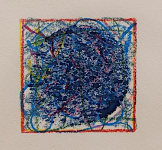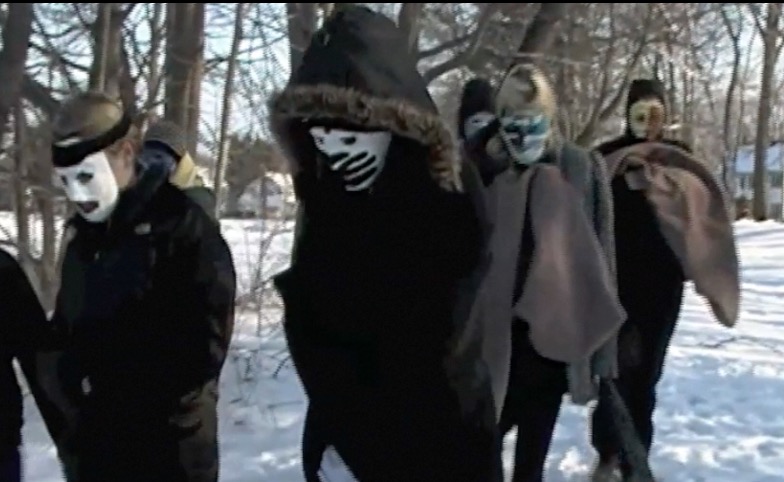The Seed of Change

Painting by Barbara Clark, 2009
Photo by Roy Temple
Aesthetic Education Program Models: Create Compassionate Communities to End Homelessness

Unmasking Homelessness: Poetic Compositions and Masked Emotions,
New Britain Museum of American Art (2013)
Utilizing
place-based creative commons
inquiry, the students depicted in
the video below
investigated the authentic issue of
homelessness facing their
surrounding local community of New
Britain. They explored their
cultural biases and stereotypes,
values, beliefs, identities, and
sense of self as a teacher with
invited community artists and
activists leading a myriad of arts
experiences. The artistic community
forums contributed to a developing
sense of the power of aesthetic
education manifested in the creation
and design of symbolic messages
using masks, poetry, dance, music,
and theater to address ending
homelessness, and breaking down
stereotypes of poverty. As shown,
symbolic ideas carried a
compassionate message to build
awareness, which was then integrated
and shared within the community to
empower transformative learning and
societal contribution.
Clark, B. A. (April, 2013). Unmasking Homelessness: Poetic Compositions, Aesthetic Education and Masked Emotions Performance. Presented with CCSU elementary education students at the CCSU University, Museum Community Collaborative, A Home of One’s Own, New Britain Museum of American Art.
Clark, B. A. & French, J. (May 2009). Creating a Compassionate Community: Symbolic Messages to End Homelessness: CCSU Elementary Education Students & Gaffney Elementary School: Grades three, four and five, parents and community members. Gaffney Elementary School Auditorium.
Clark, B. A. (April, 2009) Art in the Heart of the City, Creating a Compassionate Community: Symbolic Messages to End Homelessness. Artwork developed by Gaffney School children was presented for New Britain Commission on the Arts: New Britain City Hall, CT.
Clark, B. A. & French, J. (March, 2009). “Masked” Messages to End Homelessness. An interdisciplinary aesthetic forum featuring guest artist Larry Hunt of Masque Co. and CCSU elementary education students: Torp Theatre, CCSU.
Clark, B. A. (March 2009). “Masked” Messages to End Homelessness. An interdisciplinary aesthetic forum featuring guest artist Larry Hunt of Masque Co. and CCSU elementary education students presented to grades three, four and five, teachers, and community members of Gaffney Elementary School. New Britain, CT.
The above video clip performance
illustrates the energy behind how
elementary pre-service teachers can
reveal their emerging sense of
identity as creative compassionate
teacher leaders and citizens for
change through civic engagement.
Aesthetic education encompasses
critical theory and questions status
quo waste, consumption and human
behavior. The whole of our
revolutionary aesthetic curriculum,
introduces our pre-service teachers
to local, national, and
international social and eco justice
issues, selected to impact their
ideas and beliefs of transformative
learning, sense of imaginative
societal contribution, core values,
and coping with institutional
conflicts. Topics have included the
dolphin slaughter for profit in
Taiji, Japan (of which the above
“Respect” video is one performance)
as well as ending homelessness
within our university’s surrounding
community.
When
introduced in community efforts that
embrace a sense of possibility,
social imagination and empowerment,
future educators
are given an opportunity to design
for elementary school children
aesthetic symbolic messages within a
community performance, promoting
imaginative social action
and making the possibility to change
behavior evident.
Experiencing a
compassionate community commons
methodology, teachers realize they
can be an imaginative, innovative,
and inspirational teacher of
children and citizen of change.
A critical aesthetic community
commons within a teacher preparation
course curriculum critically awakens
our students to SEE with respect,
heart and soul and to imagine, a
wide-awakening of what could be
possible in educational practice
(Greene, 2001).
All references
to outside sources can be found in
the bibliography sections of our
published work.